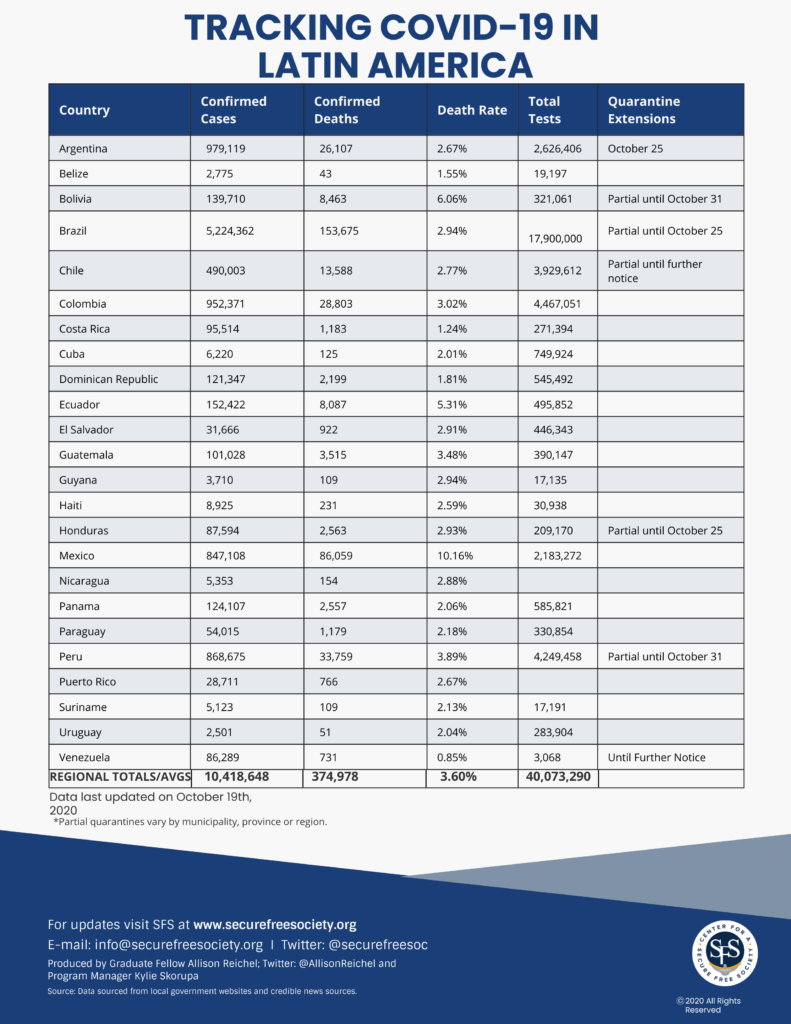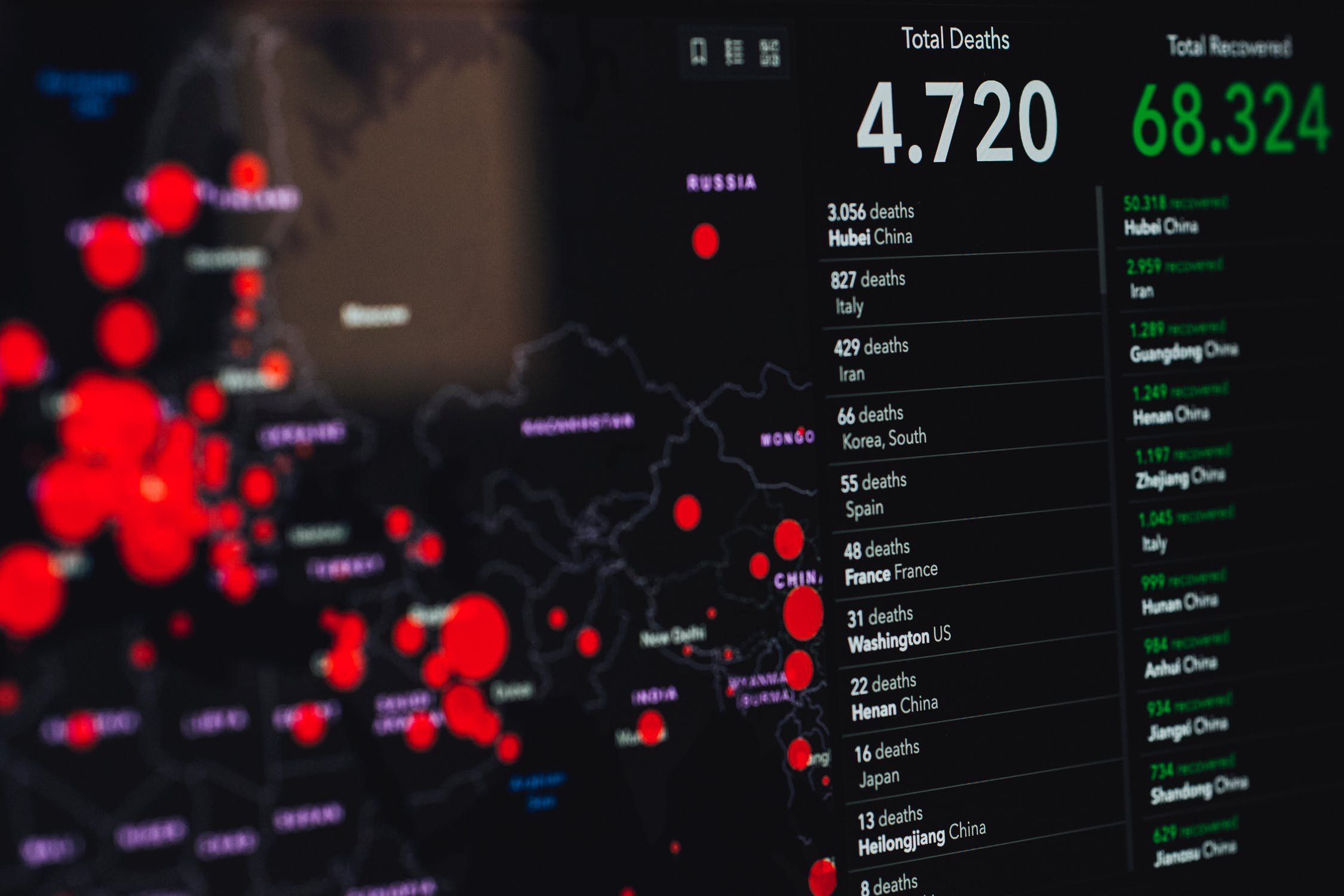EXPERT
Issues
Locations
DOWNLOAD
How is the coronavirus impacting Latin America?
Updated October 19, 2020, at 8:30 AM EST
SFS is actively tracking the confirmed coronavirus cases, deaths, mortality rate, and mitigation measures in Latin America. While every country varies in terms of its testing capabilities, cases are present in every Latin American country. Updated below is a sampling of these countries, sourced from local government websites and their social media platforms.
In October, COVID-19 rates slowed in the region. The worst is not over, as countries are still experiencing increases in confirmed cases daily and the economic fallout from the virus will impact the region for years to come.
At first glance, Brazil appears to have the worst contagion in the region with the highest gross number of confirmed cases and coronavirus related deaths. When adjusting per capita, however, Panama, Peru, and Chile, (in that order), have worse community spread of the virus than Brazil, each surpassing 250 cases per 10,000 inhabitants. Panama leads the region with 288 cases per 10,000 inhabitants, whereas Peru comes in at 263 cases per 10,000 inhabitants. Peru also leads the region in COVID-19 related deaths per capita at 10.3 per 10k.
The average Case Fatality Rate (CFR) of COVID-19 in Latin America dropped, again, to 3.6 percent. The outlier continues to be Mexico with a 10.16% CFR. Nicaragua’s erratic reporting has seemed to normalize with 5,353 confirmed cases and 154 deaths. Aside from Bolivia and Ecuador, the rest of the region has a CFR under the 3.6% regional average.
Confirmed cases are still increasing in the region, although at a slower rate, and countries in Latin America are completely open or beginning a phased opening of their economies. Only Argentina and Venezuela are imposing total quarantines, while Bolivia, Brazil, Chile, Honduras, and Peru have partial quarantines based hourly or by region. Data shows the region has administered over forty million tests, however, this is still only a fraction of the almost 650 million people that live in Latin America.



 Kylie Skorupa
Kylie Skorupa